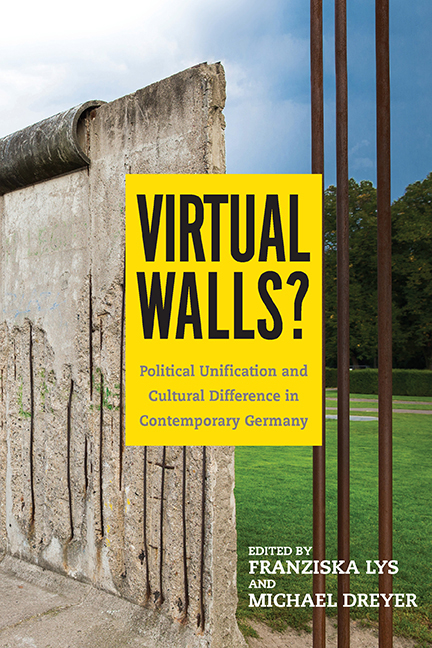Book contents
- Frontmatter
- Dedication
- Contents
- Acknowledgments
- Introduction: United Politics—Divided Culture?
- Part I What Remains: History and the Constitution
- 1 Lost in Transition: Reflections on the Spectral History of the GDR
- 2 Reconstituting the Federal Republic? Constitutional Law and Politics before and since 1989
- Part II What and How Do We Remember? Literature, Film, and Exhibitions
- Part III A Changing Reception: Painting, Orchestras, and Theaters
- Part IV A Virtual Wall? Education and Society
- Epilogue: The Wende and the End of “the German Problem”
- Notes on the Contributors
- Index
2 - Reconstituting the Federal Republic? Constitutional Law and Politics before and since 1989
from Part I - What Remains: History and the Constitution
Published online by Cambridge University Press: 24 August 2019
- Frontmatter
- Dedication
- Contents
- Acknowledgments
- Introduction: United Politics—Divided Culture?
- Part I What Remains: History and the Constitution
- 1 Lost in Transition: Reflections on the Spectral History of the GDR
- 2 Reconstituting the Federal Republic? Constitutional Law and Politics before and since 1989
- Part II What and How Do We Remember? Literature, Film, and Exhibitions
- Part III A Changing Reception: Painting, Orchestras, and Theaters
- Part IV A Virtual Wall? Education and Society
- Epilogue: The Wende and the End of “the German Problem”
- Notes on the Contributors
- Index
Summary
The German Basic Law
CONSTITUTIONS ARE AMONG the most important yet peculiar political inventions of the modern age. They are agreements that, in most respects, do not differ at all from other political agreements or declarations of intent. Nevertheless, and strangely enough, constitutions make it possible for political orders to be established, directed, maintained, and controlled. Unfortunately, the establishment of a constitution is not always sufficient for its implementation, and there are many examples of constitutions that have not succeeded. They are, generally, declarations of intent written at a specific historical moment such as the end of a war, a revolution, or even the death of a long-time ruler. Furthermore, it is not the “will of the powerful” that implements the constitution. This is important because otherwise, the powerful would simply make use of constitutions to perpetuate their advantage over the weaker members of society. Following Hannah Arendt, successful constitutions might be understood as examples of “communicative power.” They exercise a unifying force and bind everyone in a given polity (including the powerful) to a common structure by “founding a new authority” (Arendt 2006, 174). This force and authority cannot be reduced to the amount of resources the “willing” have at their disposal.
The Basic Law has been the constitution of western Germany for more than sixty-five years now, and of eastern and unified Germany for over twenty-five years. Debate about a new German constitution is almost entirely absent in German politics today, despite the fact that the global economic crisis, the threat of international terrorism, and the development of the European Union have presented and present challenges that were unknown to the authors of the Basic Law. On the contrary, the political parties mutually accuse one another of violating the foundations of the Basic Law with respect to particular policies: for instance, in the areas of domestic security, military operations abroad, fiscal policy, or the increasing integration of Europe. This situation is fundamentally different from the debates in 1989/90. At that time, the controversy over the constitution of unified Germany and especially over the establishment of a common constitution was one of the central issues both in the public sphere as well as in the unification negotiations between the Federal Republic of Germany and the German Democratic Republic.
- Type
- Chapter
- Information
- Virtual Walls?Political Unification and Cultural Difference in Contemporary Germany, pp. 39 - 56Publisher: Boydell & BrewerPrint publication year: 2017

